Fall is the season to start paying close attention to your garden. Most of us are watching our gardens wind down, and if you’re not careful, you can let this downward decline get you down, too. But if you stop, take a deep breath, and look a little closer, you’ll begin to see the beauty in fading flowers and aging foliage. If you want to spend autumn glorying in your garden and not weeping in your wellies, take charge and take advantage of the subtle charms that your plants have to offer as they fade.
Play up their colors, give them backgrounds that make them shine, and pair them with some classic fall performers. Once you begin to see the potential, fall will become fabulous. Here are a few combos to give your creativity a jump start.
Waiting for a turn in the spotlight
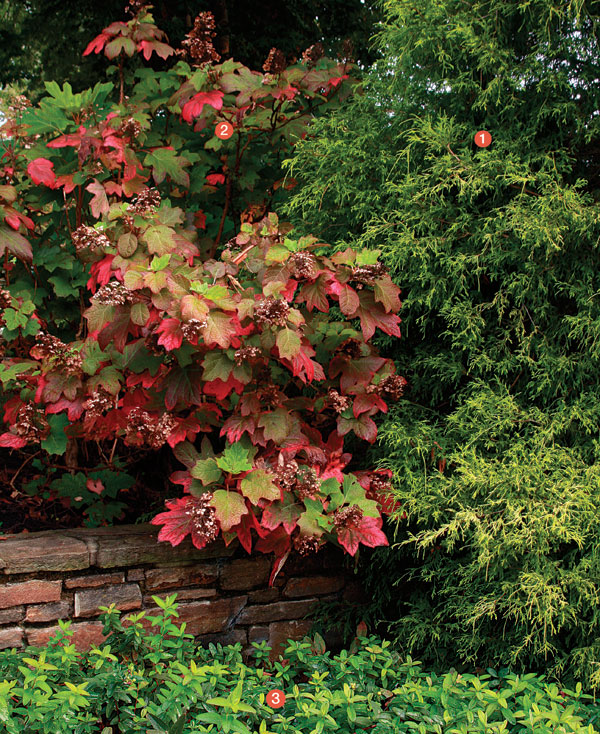
During the season, this out-of-the-way corner of the garden serves as a backdrop for the more extravagant perennial borders in full bloom nearby. But as the season winds down, this combo of shrubs starts to shine. The oakleaf hydrangea begins to turn a scarlet red around the edges, highlighting the subtle red stems of St. John’s wort, and the chartreuse hints throughout begin to glow in the autumn sunlight.
- ‘Filifera Aurea’ Sawara cypress (Chamaecyparis pisifera ‘Filifera Aurea’, USDA Hardiness Zones 4–8)
- Oakleaf hydrangea (Hydrangea quercifolia, Zones 5–9)
- St. John’s wort (Hypericum calycinum, Zones 5–9)
Conditions: Full sun to partial shade; moist, well-drained soil
Complex and compelling
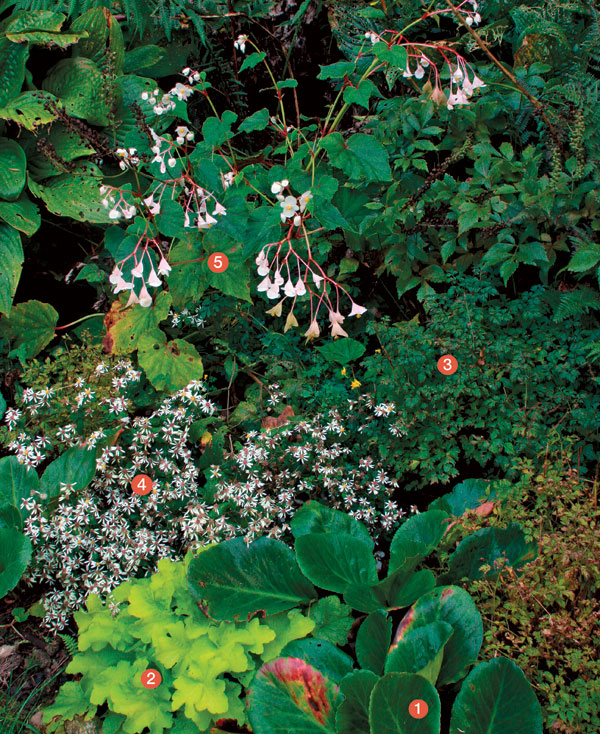
This tapestry of fall loveliness relies on a lot of plants to look so intriguing. Bold and fine textures combine to create an understated vignette that comes into its own as the temperatures cool, the aster begins to flower, and the bergenia begins to turn. Even the hosta, as it begins to decline, lends a lacy effect.
- Winter Glow bergenia (Bergenia cordifolia ‘Winterglut’, Zones 3–8)
- ‘Citronelle’ heuchera (Heuchera ‘Citronelle’, Zones 4–8)
- Dwarf goat’s beard (Aruncus aethusifolius, Zones 3–9)
- ‘Eastern Star’ wood aster (Eurybia divaricata ‘Eastern Star’, Zones 4–8)
- White hardy begonia (Begonia grandis ssp. evansiana var. alba, Zones 6–9)
- ‘Royal Standard’ hosta (Hosta ‘Royal Standard’, Zones 3–9)
Conditions: Partial shade; moist, well-drained soil
Keep the garden awake with annuals
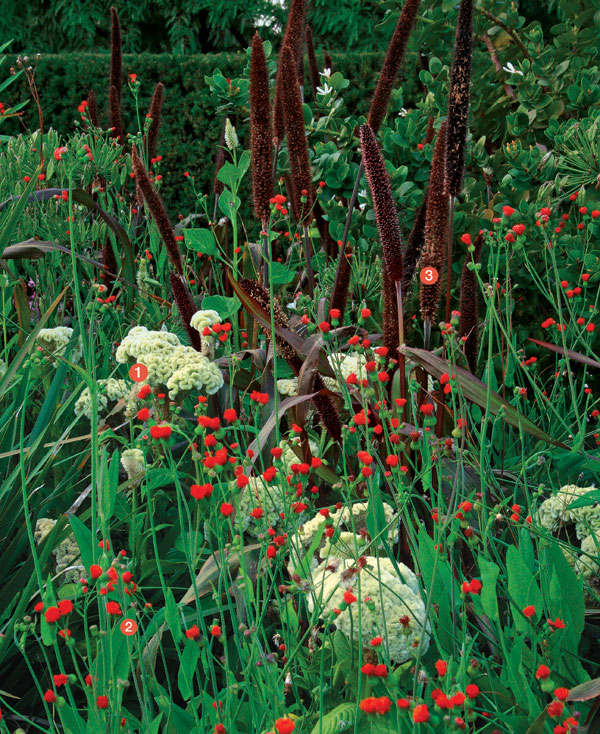
By the end of summer, most annuals are played out and look bedraggled but not these stunners. Their bold, contrasting colors and widely differing forms are an exuberant reminder that the garden is not quite done yet. The pale green flowers of the cockscomb, especially, are a freshening force in a garden that’s getting sleepy.
- Cockscomb (Celosia argentea cv., annual)
- Tassel flower (Emilia coccinea, annual
- ‘Purple Majesty’ ornamental millet (Pennisetum glaucum ‘Purple Majesty’, annual)
Conditions: Full sun; well-drained soil
Three jazzed-up versions of classic plants
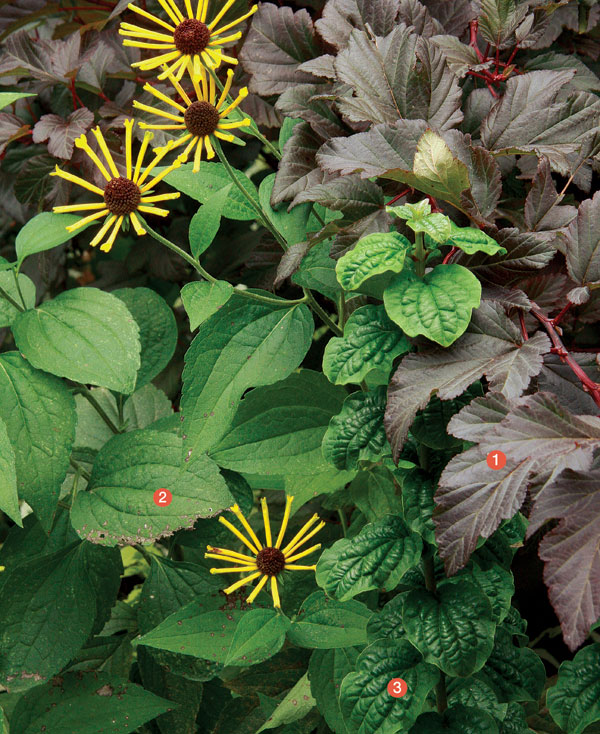
Sure, coneflowers, otherwise known as black-eyed Susans, are the epitome of fall, but watch out—Susan just got a lot more interesting. ‘Henry Eilers’, with its flared tubular petals, creates a constellation of golden starbursts that wows even from a distance, while dark-hued Diabolo® ninebark and wrinkled-leaved bloodtwig dogwood create an understated yet intriguing background.
- Diabolo® ninebark (Physocarpus opulifolius ‘Monlo’, Zones 3–7)
- ‘Henry Eilers’ sweet coneflower (Rudbeckia subtomentosa ‘Henry Eilers’, Zones 4–7)
- Contorted dwarf bloodtwig dogwood (Cornus sanguinea ‘Compressa’, Zones 4–7)
Conditions: Full sun; moist, well-drained soil
The darker side of coneflowers
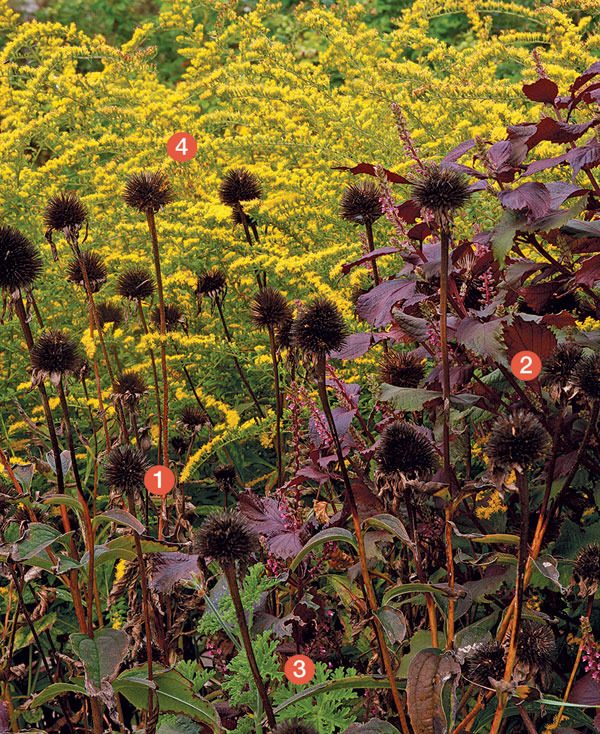
In their shades of pink and purple, coneflowers are bright and cheerful in late summer, but by fall, just their cones remain: tall, dark, and handsome silhouetted against the sulfur yellow blooms of goldenrod. These sturdy,
upright stems will persist through winter and feed the local birds, so don’t cut them down until they finally succumb to the weight of heavy snowfalls.
- ‘Magnus’ purple coneflower (Echinacea purpurea ‘Magnus’, Zones 3–9)
- Purple perilla (Perilla frutescens cv., annual)
- Scented geranium (Pelargonium cv., Zones 11–13)
- ‘Fireworks’ goldenrod (Solidago rugosa ‘Fireworks’, Zones 5–9)
Conditions: Full sun; well-drained soil
A fall fireworks display
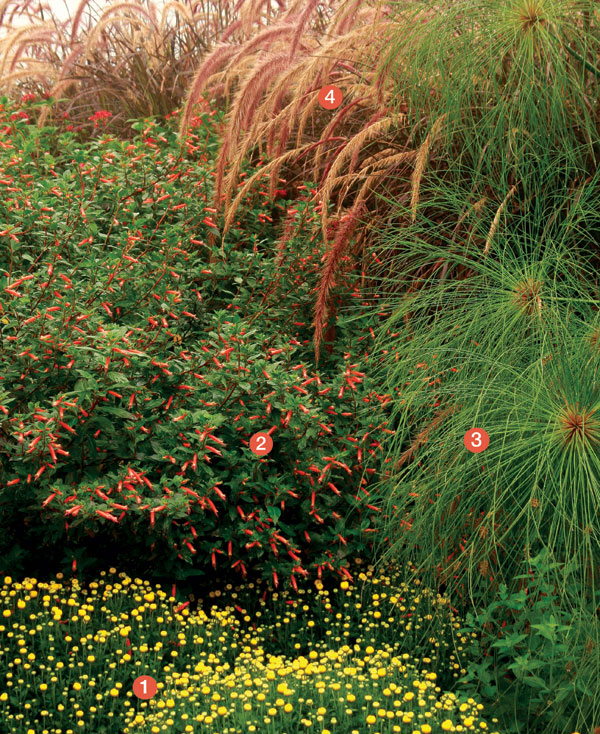
While this spectacular grouping is made up of plants that won’t come back in spring, it just might be worth the money and effort for its spectacular impact. The papyrus flowers may not be colorful, but their fireworks-like fountains are dramatic. The colors of the cuphea and the fountain grass harmonize perfectly, while the bright yellow–flowered mums scream “fall.”
- ‘Brilliant Tiffany’ chrysanthemum (Chrysanthemum ‘Brilliant Tiffany’, annual)
- ‘David Verity’ cuphea (Cuphea ‘David Verity’, Zones 9–11)
- King Tut® papyrus (Cyperus papyrus ‘King Tut’, Zone 11)
- Purple fountain grass (Pennisetum setaceum ‘Rubrum’, Zones 8–11)
Conditions: Full sun; moist, well-drained soil
Fine Gardening Recommended Products

Gardener's Supply Company Summerweight Fabric Plant Cover
Fine Gardening receives a commission for items purchased through links on this site, including Amazon Associates and other affiliate advertising programs.

Nesco Snackmaster Express Food Dehydrator
Fine Gardening receives a commission for items purchased through links on this site, including Amazon Associates and other affiliate advertising programs.

VegTrug Classic Cold Frame
Fine Gardening receives a commission for items purchased through links on this site, including Amazon Associates and other affiliate advertising programs.


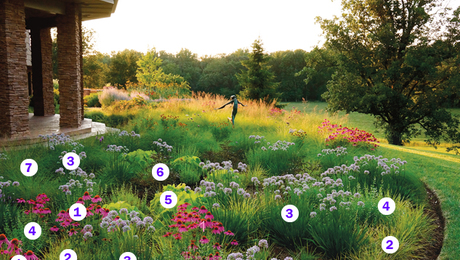
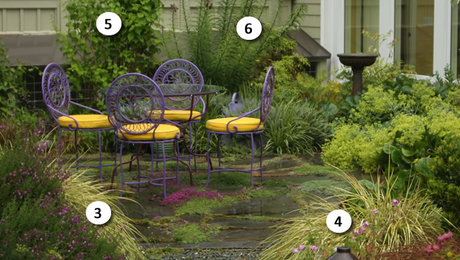
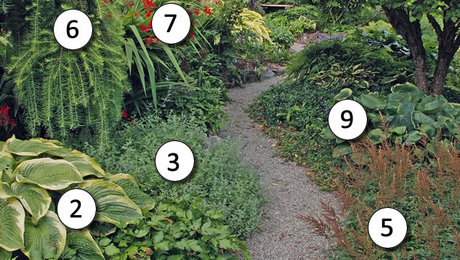
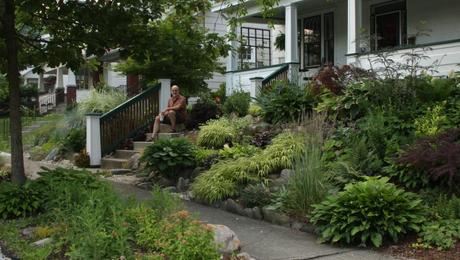












Comments
Michelle, it's so good to see your name again, coupled with these extraordinary photographs of yours, displaying the beauty of autumnal garden composition. Labeling each plant by number and name–both common and botanical– is a wonderful addition to GPOD. I hope this innovation can be continued with each garden submission. Truly, your inspirational group of photographs is a great joy. Thank you very much, Michelle, and best wishes!
We miss you Michelle!!! Will we ever have a meeting for all of us GPOD ers? How about in March at the Philadelphia flower show? I have 2 spare bedrooms. How about it? Anyone?
One fabulous fall flower left out of this article is the tall blue Ageratum.
Beautiful with the golden Lantana still blooming into fall.
Log in or create an account to post a comment.
Sign up Log in